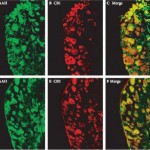Editorial: Unmasking roles of the peripheral endocannabinoid system associated with bladder overactivity
Identifying regulatory roles of peripheral endocannabinoid systems for bladder function is a highly intricate task; nonetheless, in this issue of BJUI, a research report by Aizawa et al. [1] shows functional evidence for a role of fatty acid amide hydrolase (FAAH) in improving bladder overactivity induced by prostaglandin E2 (PGE2) in rats. By systemically blocking FAAH with URB937, an inhibitor of FAAH that does not penetrate the CNS, the authors found that afferent nerve activity and bladder cystometric parameters decreased in a rat overactive bladder model induced by intravesical perfusion of PGE2. Confirmation that ≈80% of dorsal root neurones at the Lumbar-6 dorsal root ganglia co-express FAAH and cannabinoid receptors 1 and 2 (CB1, CB2), emphasises the role of the peripheral endocannabinoid system during bladder overactivity induced by increased activity of C-fibres during PGE2 application.
Because FAAH catabolises CB ligands rapidly, a key regulatory role for pain perception was initially proposed [2]. Now, we recognise that the peripheral endocannabinoid system participates in both normal physiology and pathological conditions of the heart, liver, immune system, bone, skin, skeletal muscle, reproduction, and gastrointestinal tract [3]. The participation of the endocannabinoid system in regulating lower urinary tract function has been less studied; however, research evidence suggest an important regulatory role at different levels of the micturition reflex [4]. The study of Aizawa et al. [1] is important because it shows that the rat urinary bladder can be affected by the catabolism of endogenous ligands for CB1 and CB2 during systemic FAAH inhibition in conditions of bladder overactivity induced by PGE2. However, the experiments were performed in conditions where the urothelial cell layer was disturbed with the intravesical application of protamine sulphate. Although this seems to be the best approach to induce bladder overactivity with PGE2, it disturbs the sensory role of the urothelium for monitoring the urinary bladder filling status [5]. Thus, an alternative model for bladder overactivity requires an evaluation of an FAAH inhibitor. Supporting this suggestion, a recent report by Wang et al. [6] shows that intravesical application of a CB1agonist decreases bladder overactivity induced by intravesical nerve growth factor (NGF) in mice with an intact urothelial layer. Additionally, NGF did not induce bladder overactivity in knockout mice for the FAAH enzyme, reinforcing the suggestion for Aizawa et al. [1] about testing the peripherally-restricted inhibition of FAAH with URB937 in urothelium-intact rats.
The above comments and references recommend the performance of a pre-clinical evaluation of the endocannabinoid system using FAAH inhibitors to treat, for instance, neurogenic bladder overactivity in rats with spinal cord injury. Naturally, this overactive bladder model will prove to be more complicated and challenging to evaluate, but the results may provide overwhelming support for a rigorous assessment of the use of cannabinoids to treat urinary bladder dysfunction in humans [3]. At the mechanistic level it would be interesting to know at what part(s) of the micturition reflex is FAAH regulating bladder function. How significant is the catabolism of endogenous CB1/CB2 receptors during the storage and contraction phases of either normal or altered micturition? While the current study of Aizawa et al. [1] contributes to a deeper knowledge of the cannabinoid system in bladder dysfunction, additional studies are required to determine whether systemic inhibition of FAAH improves C-fibre mediated bladder sensory pathways in other animal models of detrusor and bladder overactivity.



